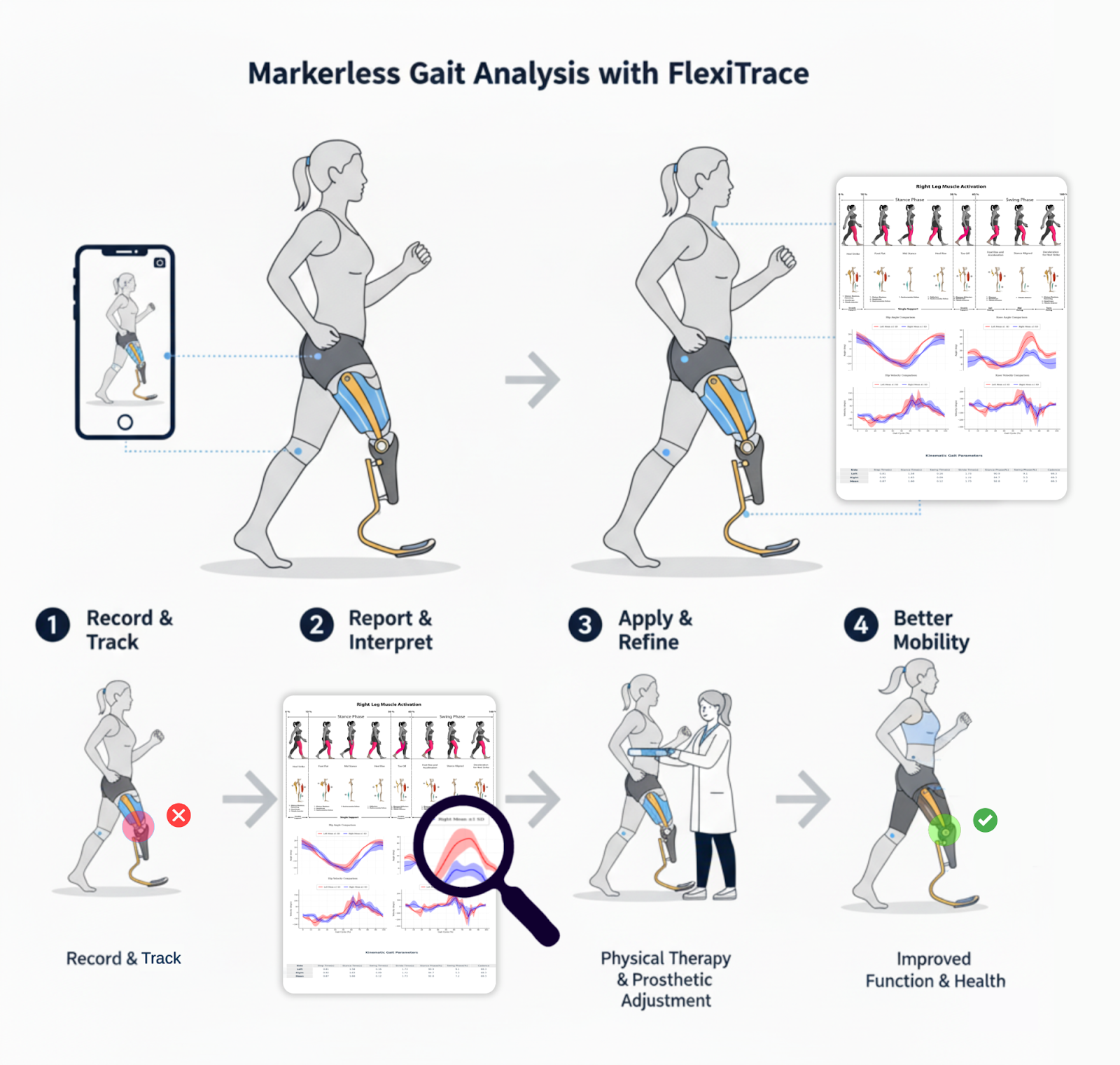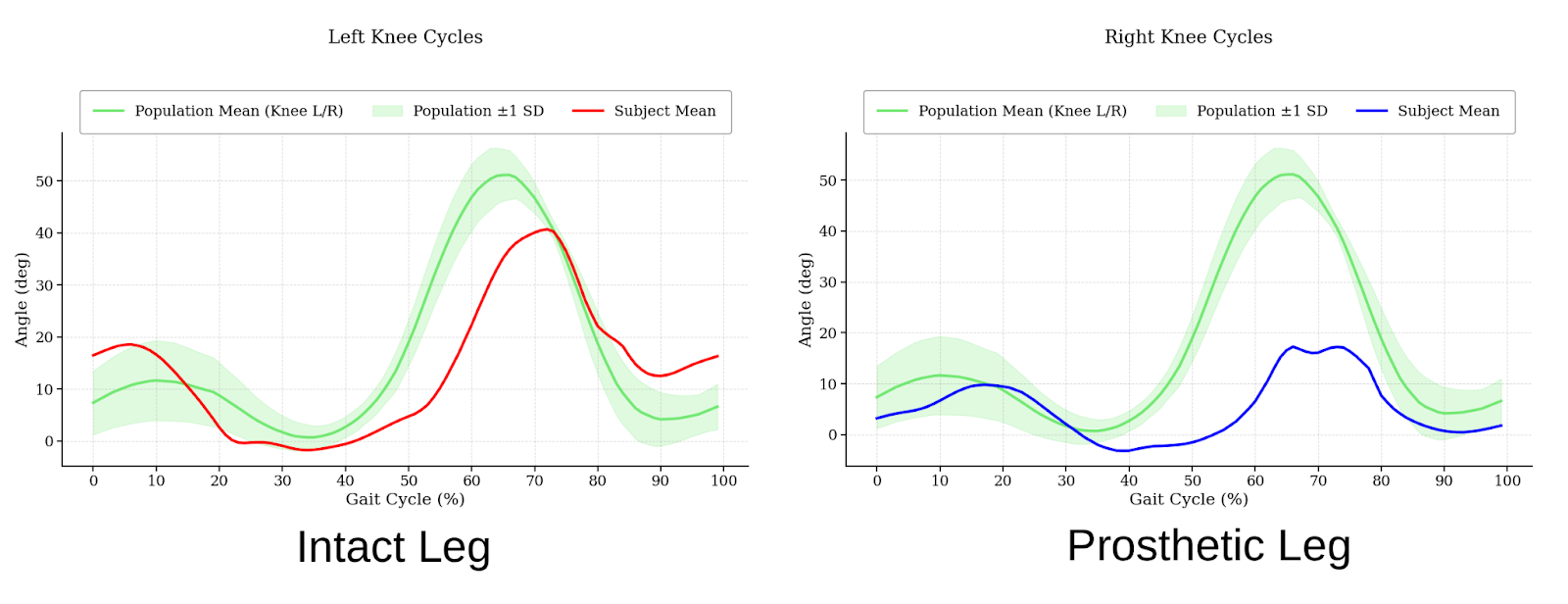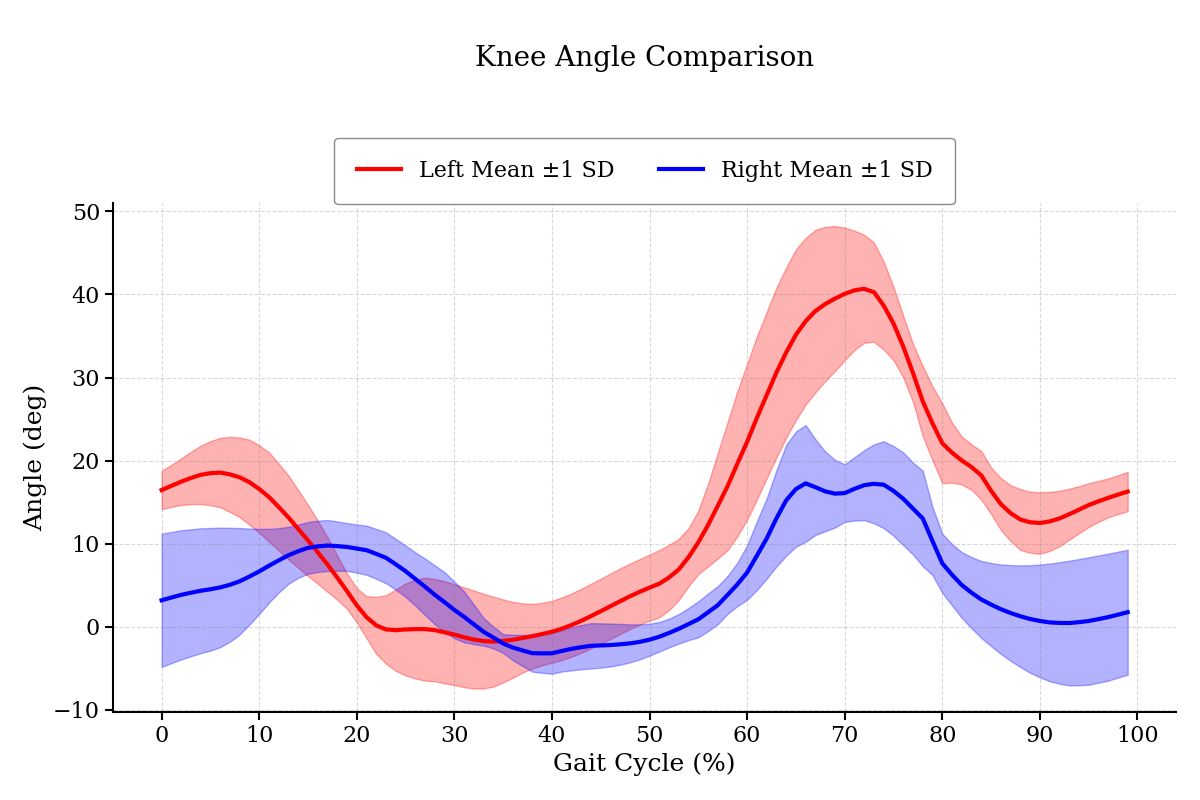Lower-limb amputation, the surgical removal of a part of the leg, is a life-altering procedure often necessitated by conditions like vascular disease (e.g., complications from diabetes), severe trauma, or infection. Following surgery, the primary goal of treatment is to restore mobility and function. This is most commonly achieved through the use of a prosthesis, a custom-made artificial limb designed to replace the missing body part. While modern prosthetics are incredibly advanced, adapting to one requires the body to learn entirely new ways of moving, which fundamentally changes a person's walking pattern.
An individual's walking pattern, or gait, is a complex sequence of coordinated movements. The loss of a limb and the introduction of a prosthetic device disrupt this sequence significantly, forcing the body to develop compensatory strategies.
For example, research by Adamczyk and Kuo (2015) highlights that the primary mechanical deficit is a weakened "push-off" from the prosthetic side during the final phase of a step. This single issue creates a cascade of biomechanical compensations, resulting in a characteristically asymmetric gait:
Increased Impact on the Intact Limb: The weaker push-off from the prosthetic side causes the intact leg to absorb more force upon landing, leading to a "harder" collision with the ground.
Asymmetric Movement: The gait temporal parameters, such as swing time and stance time, joint angles, and spatial parameters such as step lengths, become dissimilar between the prosthetic and intact sides.
Gait analysis is an invaluable tool in this context. By precisely measuring and quantifying these changes, it allows clinicians and individuals to understand the specific nature of the asymmetry. This objective data is crucial for guiding physical therapy, optimizing the fit and function of a prosthesis, and preventing secondary issues like joint pain or osteoarthritis in the intact limb. However, traditional lab-based gait analysis can be inaccessible or cumbersome, as it often requires specialized equipment, travel to a clinic, and the ability to walk in a controlled environment, which may be physically demanding for individuals with prosthetic limbs.

Our app provides a comprehensive report that helps users and their healthcare providers visualize and understand their unique walking patterns. This includes comparisons between the prosthetic and intact limbs (asymmetry analysis) as well as comparisons against the general population.
You can watch the video on YouTube.

Asymmetric Timing: In the example report, we can observe that the swing time of the prosthetic (right) leg is shorter than that of the intact leg. This is a common compensation, where the user moves the prosthetic leg through the air more quickly to minimize instability.
Asymmetric Joint Kinematics: The knee flexion-extension profile provides a clear window into how the joints are functioning through the gait cycle. In the sample analysis of a user with a right-leg prosthesis, the report shows a significantly reduced peak flexion and overall range of motion in the prosthetic knee compared to the intact side. The prosthetic knee exhibits a stiffer movement pattern, which is a direct consequence of the mechanical properties of the device and the user's adaptation to controlling it. Tracking this parameter is vital for assessing how well an individual is adapting to their prosthesis and whether adjustments in physical therapy can encourage more natural movement.
Reduced Cadence: The overall cadence (steps per minute) is lower than a typical range for normal people. This reflects a gait pattern adopted to ensure stability and control with the prosthesis.
The FlexiTrace Knee Tracker provides a clear, quantitative asymmetry profile for key gait kinematic angles. This feature moves beyond simple observation, offering objective data on the degree of difference between the two legs. For an individual with an amputation, this is perhaps the most critical metric. It allows for:
Establishing a Baseline: Understanding the initial level of asymmetry right after receiving a prosthesis.
Monitoring Progress: Tracking how physical therapy and practice are helping to create a more symmetric, balanced gait over time.
Informing Adjustments: Providing data that can help a prosthetist fine-tune the alignment or components of the prosthesis to improve gait symmetry and comfort.

Understanding your unique movement pattern is the first step toward optimizing your mobility and living comfortably with a prosthesis. The FlexiTrace Knee Tracker empowers you and your healthcare team with the objective data needed to make informed decisions about your rehabilitation and prosthetic care. By tracking your gait, you can monitor your progress, measure the impact of therapy, and proactively manage your long-term joint health.
[1] Adamczyk, P.G. and Kuo, A.D., 2014. Mechanisms of gait asymmetry due to push-off deficiency in unilateral amputees. IEEE transactions on neural systems and rehabilitation engineering, 23(5), pp.776-785.